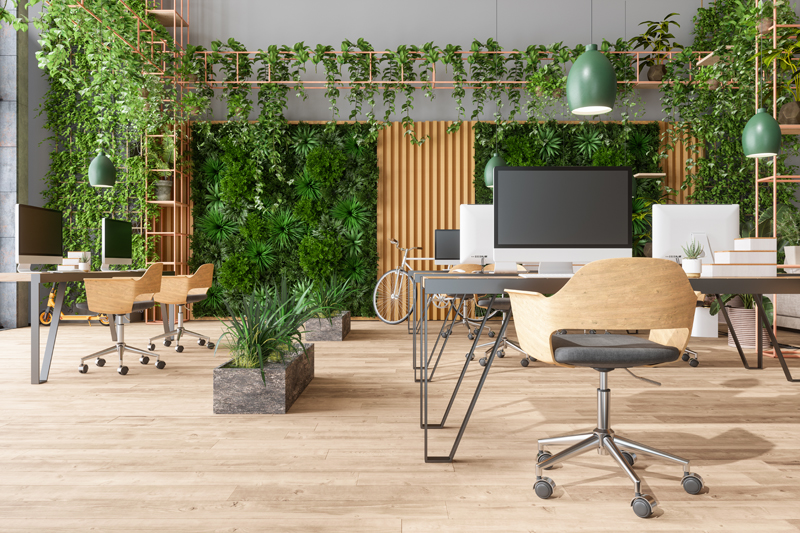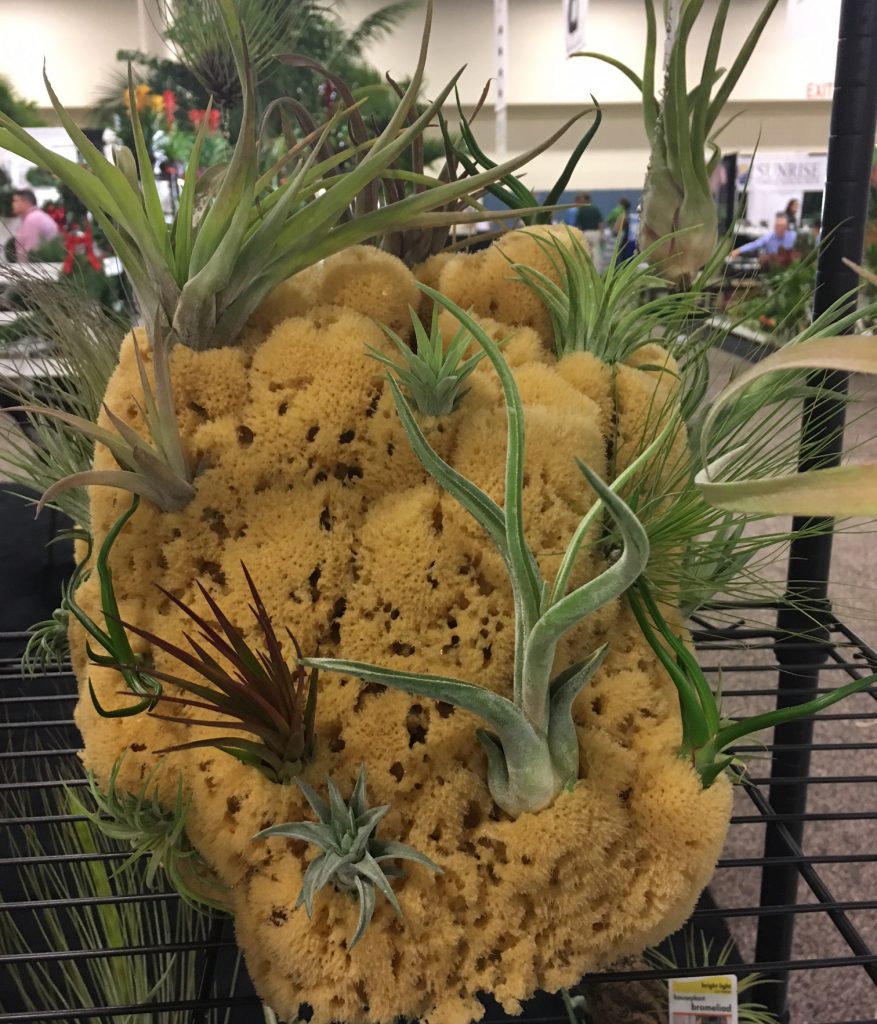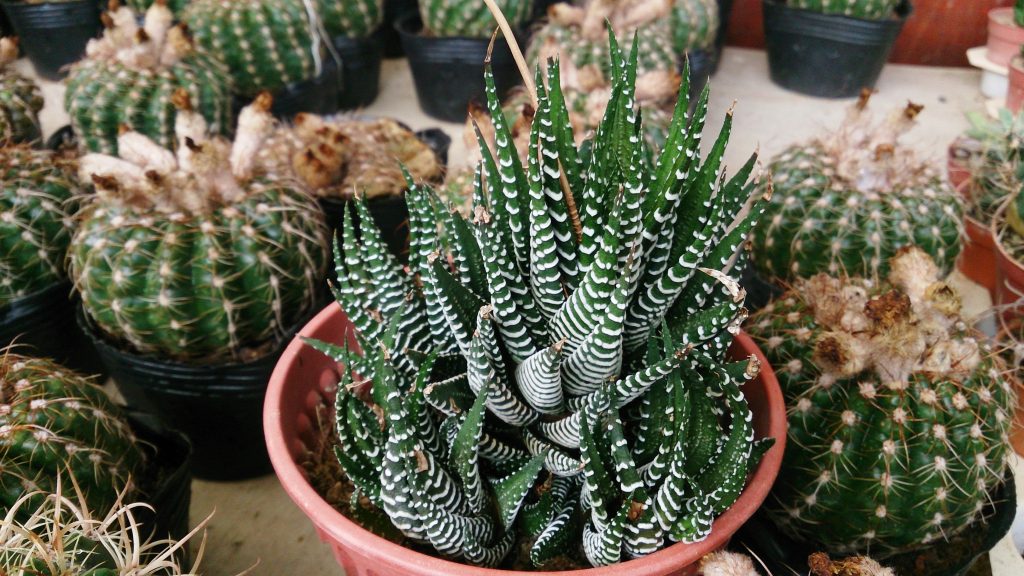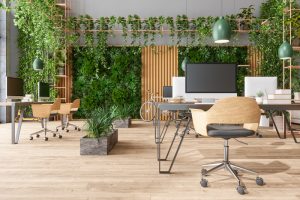
You’ve read here many times about the benefits of having plants in your workplace environment. They absorb impurities and toxins in the air, they help dampen noise down in open floor plans, and they improve your mood, creativity, and productivity. Really, there is no down side.
You may have noticed the same type of indoor plant on everyone’s desk in every office. The reason you see certain plants all the time makes sense. These plants tolerate the less than perfect growing conditions in many indoor spaces. They will absorb some abuse, and still look beautiful.
This is why Good Earth Plant Company uses and recommends hardy flowering orchids, colorful bromeliads, pretty variegated pothos, tough sansevierias and the workhorse dracaena family.
But if you are a little more adventurous – or maybe bored! – there are plenty of other choices. Some require you to give them a little more attention, but not many. We chose our Top Ten most unusual indoor plants for you to consider adding to your workspace.
#1 ZZ Plant
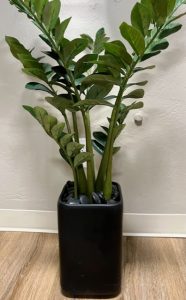
Office plants thrive in the right conditions – this plant lives in the Good Earth Plant office
Zamioculcas Zamiifoliais better known as the ZZ Plant. It’s a dramatic plant which does well in most offices with a minimum of care, the magic combination. It does best in filtered light and it will tolerate nearly any kind of light, but not direct sun. What’s so interesting about this plant is hidden below the surface. It has roots that look like a potato and they store water. For this reason, you don’t have to water the ZZ Plant very often. If you seem hit with Fungus Gnats all the time, the ZZ Plant is perfect for you: it never gets gnats. You can propagate it simply by slicing off a leaf and putting it into moist soil. But be patient, it grows slowly – which can be another advantage if you’d like to keep the plant in a small container on your desk for a long time.
#2 Lithops
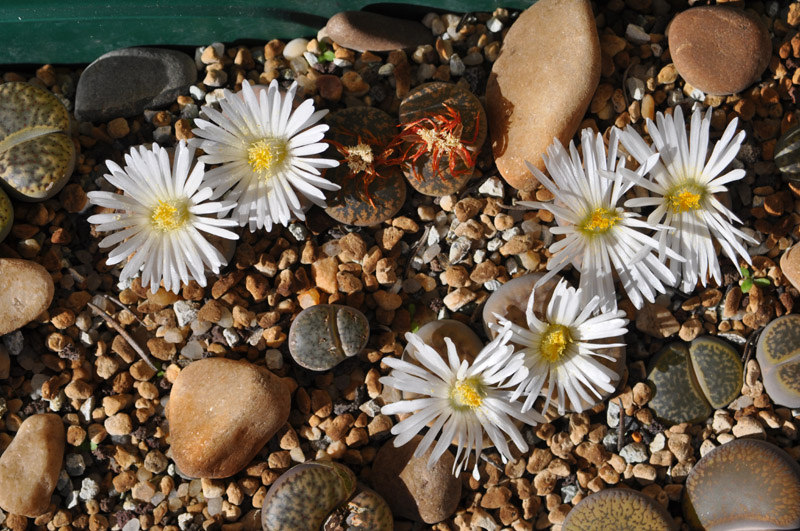
They aren’t rocks, they are succulents called Lithops. They come in many shapes and colors. Photo: Ezequiel Cohelo/Creative Commons
If you work in an office without much light, or you’re looking for something Zen minimal, Lithops are the plant for you. These are called Living Stones and the reasons are obvious: they look like rocks. They are succulents made from two plump leaves. A flower will bloom in between the leaves in the fall. All you need is at least four hours of direct sun a day, near a window for instance. They only need watering twice a year. No kidding. Water them in the spring when their new leaves form and replace the old ones, and when your flower appears. They look great grouped together in a shallow tray.
#3 Touch-Me-Not or Bashful Plant (Mimosa Pudica)
With this plant, seeing is believing. Look what happens to the leaves of this plant when you touch it.
Don’t worry, they will open back up a few minutes later. The leaves also fold up at night, and then open up when the sun rises in the morning – or when you turn the office lights on. This plant is happy with a little shade, so it’s a good choice for a slightly darker room. But they don’t like to be cold, so if you blast the air conditioning, take this one home where it’s a little more comfortable (at least 65 degrees).
#4 Sweetheart Hoya
#5 Sweetheart Hoya
The Sweetheart Hoya has been popular for many years, and people love to grow them because of their heart shape which is completely natural to the plant. But you don’t see them in a lot of offices. Let’s change this! Hoyas are a climbing plant, so you need to guide the stems. They have a hardy waxy quality and they produce beautiful flowers. But they aren’t for the fragrance sensitive, so be considerate if they are too overpowering for your co-workers. Consider them for bigger spaces like a lobby, common area or breakroom. Hoyas don’t need direct light but they DO need some light. You can mist the leaves but not when the plant is flowering in the spring and summer. They are especially happy with a little plant food during flowering season too. You can grow Hoyas from leaf cuttings.
#6 String of Pearls
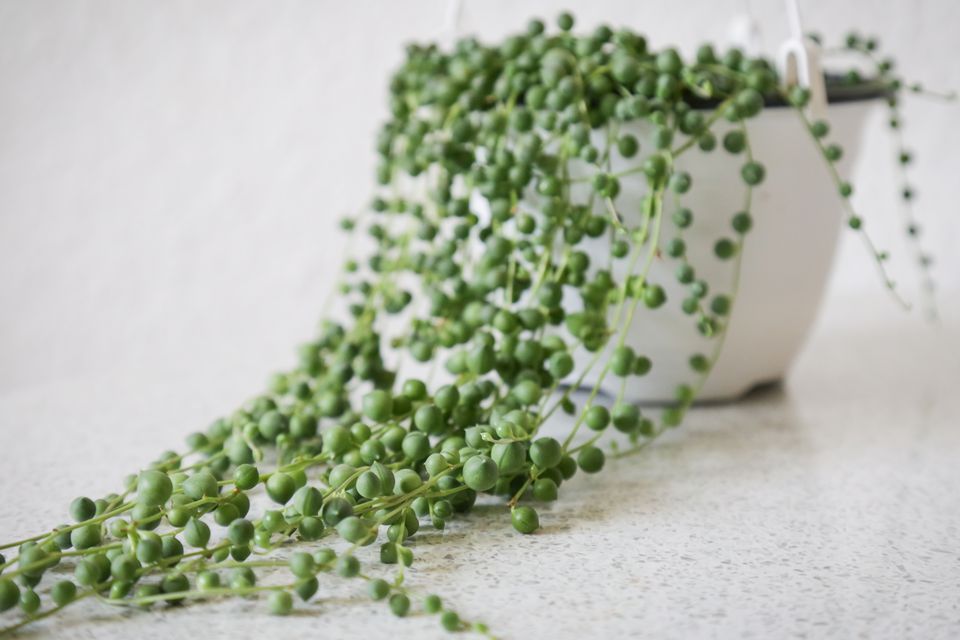
It’s easy to see how this trailing succulent got its name, “String of Pearls.” Photo: Maja Dumat/Creative Commons
You have probably seen this unusual succulent in Southern California as a hanging plant for your patio. But you can grow it indoors too. The name describes the long stems and the round leaves that looks like pearls draping down from the plant. They look fragile but they grow nicely in bright light of any kind. Like all succulents, water them infrequently, only when the soil is dried out.
#7 Donkey’s Tail
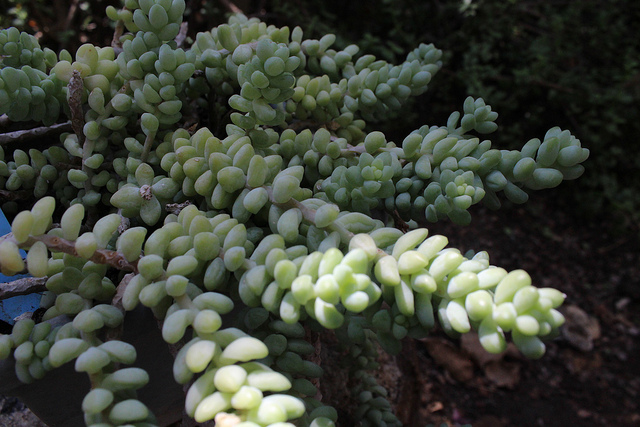
Whether you prefer to call it “Donkey’s Tail” or “Burro’s Tail,” these trailing succulents can be a good indoor choice.
This is a trailing succulent you may be familiar with. It goes by Donkey’s Tail or Burro’s Tail and is native to Mexico and Honduras. It’s a type of sedum with thick little leaves on stems that cascade over the edges of their containers. They are easy to propagate like lots of sedums, and they can grow in bright light or partial sun. With a little water every two weeks, they will grow nicely. They can be a little bit fragile and break off when their stems get big and heavy, so don’t handle them too much. Hang them (macramé is back in style!), or sit one up high on a shelf to take advantage of letting the “tails” drape.
#8 Tillandsias
These little guys were all the rage back in the 1970s when I first started Good Earth Plant Company. Like macramé, they are on a comeback too. Tillandsias are a type of bromeliad, and commonly called air plants. Of the 2,500 different species of bromeliads, 550 are Tillandsias. They grow in jungles, rainforests and deserts in nature, at sea level and in the high mountains. So they can tolerate a huge range of office environments. They use their roots to attach themselves to trees and rocks. All they need are good light, air circulation, and water. They absorb water through their leaves. If you are prone to overwatering (and you know who you are!), you can mist Tillandsias two to three times a week.
#9 Zig Zag or Fishbone Cactus
Aren’t the leaves on this cactus cool? Their zig-zag pattern gives them a different look than your average office plant. It is very low-maintenance, and it’s perfect for people who forget (ahem!) to water regularly. It actually does great if it dries out from time to time. Put it in a sunny window
#10 Zebra Cactus
The zebra cactus is striking to look at. It does well in partial light and needs very little water, which makes it an ideal choice for the office. Their sword shaped leaves will remind you of a type of aloe, but they are smaller and grow more slowly. The stripes add a lot of personality, so put this one in a funky container for a statement plant/piece.
Hope our Top 10 favorite indoor plant choices gave you some new ideas for your office!
To get the most health benefit from your indoor plants, they need to be healthy and clean. While our choices are fairly easy care, they do need regular care and attention. Match your choice to your indoor conditions and if you’ve chosen wisely, your plant should thrive.
If you are just too busy to care for your indoor plants and you’re located in Southern California, Good Earth Plants has residential and commercial clients. You can contact us right on our website.

